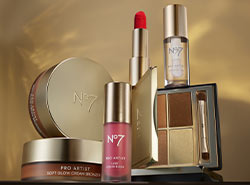Which should you put on first? Do you really need both a serum & a moisturiser? (Spoiler alert – we’ll explain why you do!)
This article is sponsored by Kiehl’s
There’s no better skincare routine than one that really works and helps you achieve your skincare goals. But there’s a lot to learn – from the ingredients that complement each other to the dos and don’ts of skincare layering.
When it comes to using serums and moisturisers, things might feel a little confusing. What’s the difference? Which order do you use them in? And how do you pair a serum and moisturiser like a pro? We're here to help.
What’s the difference between serum & moisturiser?
Simply put, a facial serum helps you target specific skin concerns by providing a highly concentrated formula of key ingredients. Because they contain smaller molecules and are much more lightweight in texture, serums can penetrate more deeply into the skin’s surface – as deep as 10 layers!
Serums tend to be suitable for all skin types – whether that’s normal, dry, combination or oily – and target a variety of skin concerns like dehydration, pigmentation, fine lines and strengthening the skin’s barrier.
Try: Kiehl’s Ultra Pure High-Potency Serum 1.5% Hyaluronic Acid
• Size: 30ml
Hyaluronic acid is the holy grail when it comes to hydration. Formulated with just seven ingredients, this serum uses 1.5% hyaluronic acid to help replenish dry skin and retain moisture for healthy-looking skin and a plumped feel.
Try: Kiehl’s Ultra Pure High-Potency Serum 5.0% Niacinamide
• Size: 30ml
Known in the skincare world as a bit of a wonder ingredient, niacinamide works to target a whole host of skin concerns, from improving the look of uneven skin tone to helping strengthen your skin barrier. With just 10 ingredients, this serum helps visibly reduce excess oil and minimise the look of redness and other imperfections.
The main job of a moisturiser is to keep the outer layer of the skin hydrated and prevent moisture loss. They’re typically a lot thicker than a serum and may include various anti-ageing ingredients or even SPF, and might also be called day creams or night creams.
How do I layer my serums & moisturisers?
When it comes to layering skincare products, there’s one simple rule to remember – always go from thinnest to thickest. So, in this case, serums come before moisturiser.
Take a look at your skincare products and make a note of what they do. Do they work to boost your moisture levels and improve skin tone, or do they act as a liquid exfoliator, like a glycolic acid? To get the best from your routine, you want to order your serums so each one can do its job to the best of its ability. As exfoliators help slough away any dead skin, dirt and impurities from the top layer of your skin, they should be the first serum you use in your routine after you’ve cleansed.
You might want to add more than one serum to your routine and there’s some real benefits to pairing certain ingredients together. If you’re looking to rehydrate and smooth your skin, a glycolic acid followed by a hyaluronic acid is a perfect pairing. For oily and imperfection-prone skin, using a glycolic acid followed by niacinamide will gently exfoliate and soothe, whereas niacinamide and hyaluronic acid is the ultimate duo for combination skin.
So, we’ve covered serums and the multiple benefits they can have for your skin. Now you might be thinking, ‘which is better – serum or moisturiser?’ Or even ‘can I just use a serum instead as a moisturiser?’ Well, the easy answer is that they always work better together.
Serums help deliver any active ingredients to the deeper layers of the skin, and the moisturiser will effectively seal them into place, lock in all the goodness and provide a little extra nourishment.
Try: Kiehl’s Ultra Facial Cream
• Size: 50ml
There’s a reason this is Kiehl’s #1 best-selling facial cream. With a lightweight texture and a blend of glacial glycoprotein and ultra-hydrating ingredient squalene, the Ultra Facial Cream gives up to 24-hour hydration and helps recover the skin barrier function and immediately leaves skin up to 2.3X more hydrated.**
Wondering how long after applying your serum you can apply your moisturiser? It’s best to wait until the product has completely absorbed before adding anything top. Your skin should feel soft and hydrated but no longer tacky – this should take a couple of minutes, tops.
And there you have it! A skincare routine the pros would be proud of.








